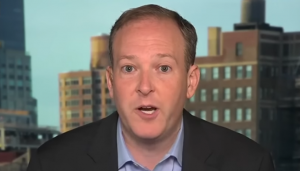Stocks fell sharply in early trading on Wall Street Thursday and are moving to cap off their worst quarter since the early days of the pandemic.
The S&P 500 fell 68.72 points or 1.80% as of 10:19 a.m. Eastern time zone. The benchmark index has been on a falling streak that dragged it into a bear market earlier this month and is now down 21% for the year. It is close to ending its worst quarter since the beginning of 2020.
Also Read | Substack fires 14% of its work force
The Dow Jones Industrial Average fell 503.28 points or 1.62% to 30,526.03. The Nasdaq Composite fell 289.58 points or 2.59% to 10,888.31. Small-company stocks also fell. The Russell 2000 slipped 1.6%.
Also Read | Amazon’s cashierless systems: Data to be shared with brands
The yield on the 10-year Treasury, which helps decide mortgage rates, slipped to 3.02% from 3.09% late Wednesday.
Retailers and other companies that depend directly on consumer spending were posting some of the biggest losses, as they have all year. Amazon slid 4.8% and Target fell 3.2%.
Also Read | Russia approves tax exemptions for issuers of digital assets, cryptocurrency
Soaring inflation has been the reason behind the slump for the broader market this year as businesses raise prices on every commodity from food to clothing and consumers are squeezed tighter. Inflation remains stubbornly high, according to a slew of recent economic updates and central banks have been aggressively hiking interest rates to try and slow economic growth to control inflation.
Also Read | REPO task force seized over $300 billion in Russian assets after Ukraine invasion
A measure of inflation that is closely watched by the Federal Reserve surged 6.3% in May from the year-ago period, unchanged from its level in April. The Commerce Department report on Thursday said that consumer spending rose at a sluggish 0.2% rate from April to May.
Also Read | Coca-Cola loses bid to revoke Indian soft drink trademarks in US
The update comes after a worrisome report earlier this week showing that consumer confidence slipped to its lowest level in 16 months. The government also reported that the US economy shrank 1.6% in the first quarter and low consumer spending was a key part of that contraction.
Also Read | MCX share rises 4% as FPIs are permitted to trade in commodity derivatives
Investors remained concerned that the US economy could slip into a recession as inflation hurt businesses and consumers. One of the major concerns is the Fed’s interest rate hikes, which could slam the brakes on economic growth too much and lead to a recession.
Also Read | Mukesh Ambani’s daughter Isha to be named chair of Reliance Retail: Report
The situation has become even more complex following increased supply chain issues because of COVID-19 lockdowns in China and Russia’s invasion of Ukraine. The Russia-Ukraine war prompted a rise in oil prices this year that resulted in record-high gasoline prices. The OPEC group and allied oil-producing nations decided to increase the production of crude oil, but the amount will likely do little to relieve high gasoline prices at the pump and energy-fueled inflation hurting the global economy. US crude oil prices slipped 3.4%, but are still up 43% in 2022.






